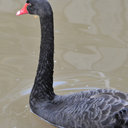Four Human Cases of Diphyllobothrium nihonkaiense (Eucestoda: Diphyllobothriidae) in China with a Brief Review of Chinese Cases.
Słowa kluczowe
Abstrakcyjny
We described 4 human infection cases of zoonotic fish-tapeworm, Diphyllobothrium nihonkaiense, identified with morphological and molecular characters and briefly reviewed Chinese cases in consideration of it as an emerging parasitic disease in China. The scolex and mature and gravid proglottids of some cases were seen, a rosette-shaped uterus was observed in the middle of the mature and gravid proglottids, and the diphyllobothriid eggs were yellowish-brown in color and displayed a small knob or abopercular protuberance on the opposite end of a lid-like opening. The average size of the eggs was recorded as 62-67×42-45 μm. The parasitic materials gathered from 4 human cases were morphologically identified as belonging to the genera Diphyllobothrium and Adenocephalus. The phylogenetic analysis based on the nucleotide sequences of cytochrome c oxidase subunit 1 gene of the etiologic agents confirmed that the 4 cases were D. nihonkaiense infection. The finding of 4 additional D. nihonkaiense cases suggests that D. nihonkaiense might be a major causative species of human diphyllobothriasis in China. A combined morphological and molecular analysis is the main method to confirm D. nihonkaiense infection.




